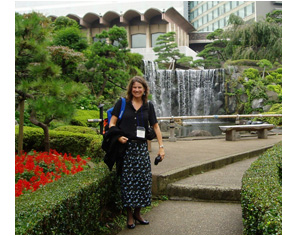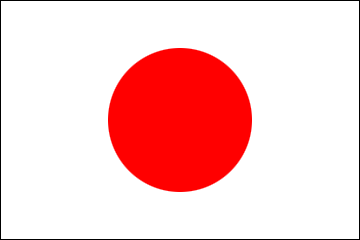My Experiences in Japan (By Judy Mayfield)
Japan Fulbright Memorial Fund was created by the Japanese government in response to the American Fulbright program which has allowed over 6,000 Japanese people to study in the U.S. and return to Japan to top positions of influence in their country. In appreciation for the US Fulbright scholars program, the Japanese government has funded this program for American teachers to visit Japan to study education and foster cross cultural communication between our countries.
 |
I was among the 200 teachers chosen from over 2300 applicants nationwide for this October cycle. It was professionally stimulating to network with teachers from across the country who are all top notch veterans in their respective fields. I teach Family and Consumer Science at the high school level in Salinas, California.
In our San Francisco orientation, we were taught how to introduce ourselves in Japanese, using the "meishi" or business cards we were required to prepare. I found this to be an invaluable tool and delightful tradition to meet and network with Japanese people. "Watashiwa California no Judy Mayfield des." his became the starting point for many conversations, as Japanese people take the cards seriously, take time to study them and exchange information one might have in common. When I used this Japanese custom in a kimono shop to explain my interest in traditional clothing, we were showered with presents, an invitation to tea, and a demonstration of all the special birthday kimonos for children. Through the meishi, I also met an editor of a women's magazine, someone from a food design institute, food reporters, and many teachers of all kinds. I was given wool and textiles to share with my students at a textile factory. The art museum opened up its coffers of old posters and gave us whatever we wanted for our classrooms; I found several related to fashion and textiles. People gave me fabrics for a quilt I had planned for my textiles arts unit on Japanese/American culture. An antique dealer sold me an 80 year old kyogen mask for me to take to my drama department. Since coming home, I am in touch with a Fulbright scholar, a few teachers, and others I have met in Japan because of the e mail addresses on exchanged meishi. Again and again, special doors opened up for us for relationships and we experienced the generous, kind hearts of the Japanese people. And I fell in love with Japan, wanting to share its spirit with my students, colleagues, friends and community, and of course to return myself someday soon.
We spent a week in Tokyo, taking seminars from top officials and experts on education reform, government, economy, arts, math, science, peace and the status of women. I learned that the Japanese are experts at research and data analysis. We were inundated with data and graphs, but it was humanized by the resulting interpretation and application. Some of the presentations were riveting.
We then spent 9 days in the prefectures in groups of 20, where we had an in-depth look at schools. I was sent to Chigasaki in Kanagawa prefecture, near Tokyo. We had a day at each level: university, high school, junior high and elementary, as well as question and answer sessions with the mayor, the school board, teachers, and parents. What did I learn? I was surprised to learn that they have many of the same challenges as we do, such as motivating students, discipline and getting homework turned in. We have more similarities than differences. But as we mulled over the best practices gleaned from our observations, one stood out to me: that of integrated studies. Every student at all age levels in Japan has a class built into the schedule for integrated studies. In its finest form, it looks like students choosing a topic that interests them, researching it and presenting it to the class. Or it could be a problem solving lesson, or other critical thinking exercise to make students think more deeply across the curriculum. And while I am not in a position to implement this as the Japanese do uniformly in all schools, I realized that I AM an integrated studies teacher, and I learned from Japan how I can be the best integrated studies teacher that I can possibly be. In my Japanese cooking class, which I took on my day off, I observed Elizabeth Andoh, the top English speaker and writer in the field of Japanese cuisine, and 40 year resident in Japan. She integrated science into our miso lesson, not once or twice, but every other breath. She has a masters degree in 12th century Asian kitchenware, so she also integrated history, geography and of course, art in the presentation. It was all there and I soaked in her masterful teaching of integrated studies like a sponge and I will never be the same teacher again. I observed integrated studies again at the elementary school, where happy students were enriched with art, music, rice growing, dance, and even cooking, that made them love learning in all the academics as well. And I was energized to integrate it all with my students and help them to learn to love learning as they absorb science, literacy and cultures through culinary arts and clothing. I came back with 5 full lesson plans or units for my students, directly tied to the state home ec standards, but also rich with art, science, geography, language and math.
One presenter summed up educational reform with this old style Japanese character , which means "to learn". The upper part represents the teachers shaking hands with the parents'. These are on top of the school, that shelters the children. It is by working together as teachers, parents, schools and students that we can really see learning occur.
, which means "to learn". The upper part represents the teachers shaking hands with the parents'. These are on top of the school, that shelters the children. It is by working together as teachers, parents, schools and students that we can really see learning occur.
